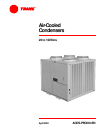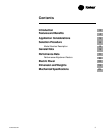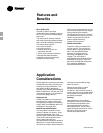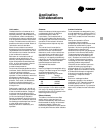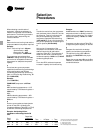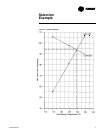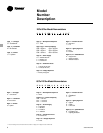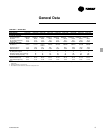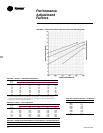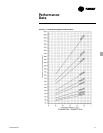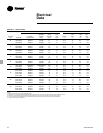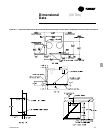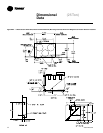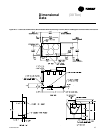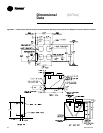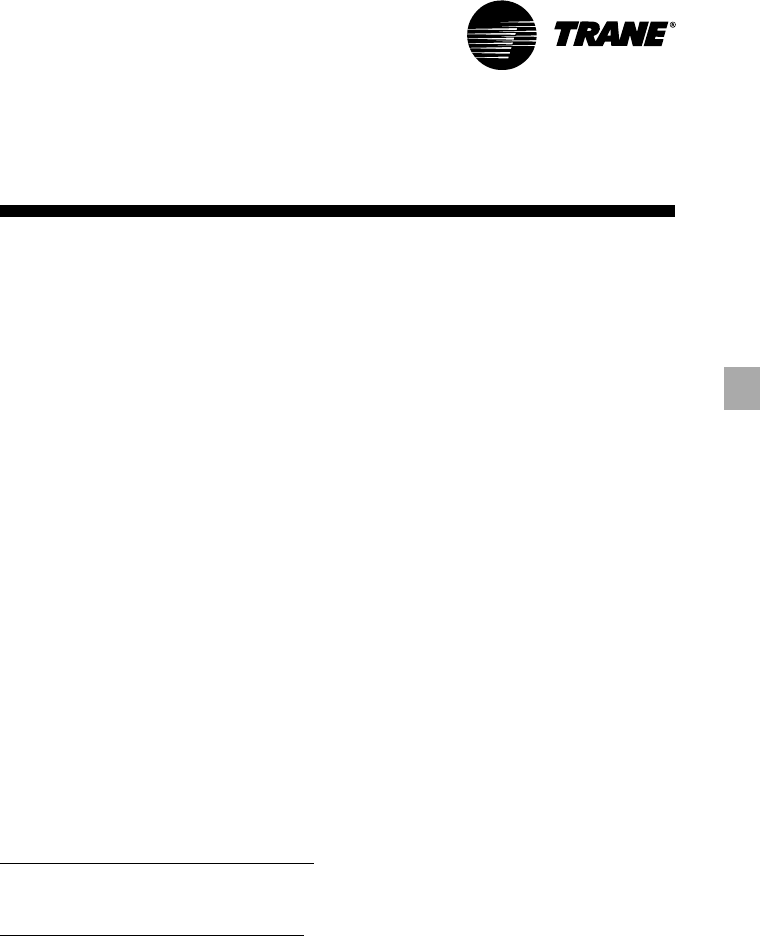
5ACDS-PRC001-EN
Application
Considerations
Unit Location
Unobstructed flow of condenser air is
essential to maintaining capacity and
operating efficiency. When determining
unit placement, careful consideration
must be given to assure a sufficient flow
of air across the condenser heat transfer
surface. Two detrimental conditions are
possible and must be avoided: Warm air
recirculation and coil starvation.
Warm air recirculation occurs when
discharge air from the condenser fans is
recycled back at the condenser coil inlet.
Coil starvation occurs when free airflow
to the condenser is restricted.
Both warm air recirculation and coil
starvation cause reductions in unit
efficiency and capacity because of the
higher head pressures associated with
them. In more severe cases, nuisance
unit shutdowns will result from
excessive head pressures.
Cross winds, those perpendicular to the
condenser, tend to aid efficient operation
in warmer ambient conditions.
However, they tend to be detrimental to
operation in lower ambients or when hot
gas bypass is used due to the
accompanying loss of adequate head
pressure. As a result, it is advisable to
protect air-cooled condensers from
continuous direct winds exceeding 10
miles per hour.
Debris, trash, supplies, etc., should not
be allowed to accumulate in the vicinity
of the air-cooled condenser. Supply air
movement may draw debris into the
condenser coil, blocking spaces between
coil fins and causing coil starvation.
Special consideration should be given to
low ambient units. Condenser coils and
fan discharge must be kept free of snow
or other obstructions to permit
adequate airflow for satisfactory unit
operation.
Clearance
Vertical condenser air discharge must be
unobstructed. While it is difficult to
predict the degree of warm air
recirculation, a unit installed with a
ceiling or other obstruction above it will
lose capacity and the maximum ambient
operation will be reduced. Nuisance
high head pressure tripouts may also
occur.
The inlet to the coil must also be
unobstructed. A unit installed closer
than the minimum recommended
distance to a wall or other vertical riser
may experience a combination of coil
starvation and warm air recirculation,
resulting in unit capacity and efficiency
reductions, as well as possible excessive
head pressures. The recommended
lateral distances are listed in the
Dimensional Data section.
Voltage
Nominal voltage is the nameplate rating
voltage. The actual range of line voltages
at which the equipment can
satisfactorily operate is given below:
Nominal Voltage
Voltage Utilization Range
200/220 180-220 or 208-254
460 416-508
575 520-635
200/230-volt units ship from the factory
set for operation in the 180 through 220-
volt range. By changing leads on unit
transformers, the unit will operate in the
208 through 254-volt range.
Effects of Altitude
The tables in the Performance Data
section are for use at sea level. At
elevations substantially above sea level,
the decreased air density will decrease
condenser capacity. Refer to the
Performance Adjustment Factors section
to correct performance at other altitudes.
Ambient Limitations
Trane condensers are designed for year-
around applications in ambients from 0 F
through 115 F. For operation below 0 F or
above 115 F, contact the local Trane sales
office.
Start-up and operation of Trane
condensers at lower ambient
temperatures require that sufficient head
pressure be maintained for proper
operation. Minimum operating ambient
temperatures for standard unit
selections and units with hot gas bypass
are shown in the General Data section.
These temperatures are based on still
conditions (winds not exceeding five
mph.) Greater wind velocities will result
in a drop in head pressure, therefore,
increasing the minimum starting and
operating ambient temperatures.
Units with the low ambient option are
capable of starting and operating in
ambients down to 0 F, 10 F with hot gas
bypass. Optional low ambient units use
a condenser fan damper arrangement
that controls condenser capacity by
modulating in response to head
pressure.
Maximum cataloged ambient
temperature operation of a standard
condenser is 115 F. Operation at design
ambients above 115 F can result in
excessive head pressures. For operation
above 115 F, contact the local Trane sales
office.



